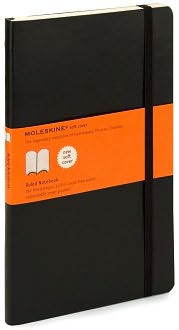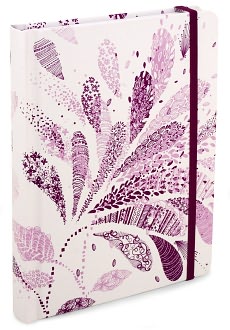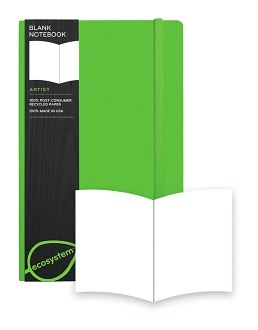
Why it's a better choice: This brand is 'Eco-Cert' certified, which is a globally recognized guarantee that environmentally responsible practices are upheld in all aspects of the product. That means the packaging is made using significantly less plastic, does not contain synthetic fragrances, preservatives, GMOs, or parabens. They also do not test on animals.

What I've noticed: The loose powder gives as much coverage as a liquid foundation and takes less time to apply with a brush. It also has decent staying power for a powder foundation. The lipgloss has good color payoff without being sticky and has a subtle fruity smell. They offer a blush/bronzer duo which I love, and the bronzer is naturally shimmery, without being too sparkly. Last but not least, there are eyeshadow duos that come in pretty color combos for every eye color, even hazel. The eyeliners that correspond to the eyeshadows are creamy and stay put.

Drawbacks: The brush that comes with the loose powder is coarse and doesn't distribute the product very well. It's best to use your own makeup brush with this one. I would also highly recommend using an eye primer with the shadows, as they are very sheer. The blush by itself is...how do I put this? It sucks. I purchased Blushing Organics, and it didn't even show up on my skin. I returned it and purchased it in their deepest mauve, Rosy Organics, and got the same result. Don't bother trying it.
However, my main issue with this brand is that they do not

provide enough color options in the loose powder for most skin tones. The 'medium' loose powder hardly merits the name, as it blends well with my very light skin...it would probably wash out someone with a deeper skin tone. However, if you do have fair or light skin, this is a fun line to try. Bottom line, the lipgloss, eyeliner, bronzer/blush duo, and bronzers are great. The foundation is awesome when applied with your own brush, and the blush is a waste of money.
Sally Hansen Natural Beauty Inspired by Carmindy


Why it's a better choice: While this brand is not eco-certified, the quality of the ingredients is pretty impressive for a drugstore brand. The products do not contain parabens or pthalates, and they do not test on animals. Also, the co-creator, Carmindy, is from 'What Not To Wear'. She is the make-up artist with the sweet disposition (not to mention she's gorgeous!) and is a big believer in self-confidence on the inside out. The fact that she helped coordinate the palettes and choose the colors, not to mention she actually uses the products on the show, tells me they're of good quality.
What I've noticed: The concealer is hands-down the best product. It's

creamy, but not tacky, conceals redness, puffiness, and dark circles. Not bad for under $10. There is a pink concealer for overall brightening and three skin-matching shades. This brand also carries an eye primer, which is so cool for a drugstore brand. There are also more foundation options for various skin tones and it covers redness really well. It's also lightweight and fragrance free. The lipgloss is also very pretty and comes in a variety of colors. It also doesn't feel sticky.
The cream blush blends evenly and is simple to apply, leaving a pretty sheen on your face and acts as a blush and highlighter in one. The eyeliner is also long lasting and goes on smooth.
 However, my favorite are the eyeshadow palettes. They each contain three coordinating colors, and come labeled so you know which is for the lid, contour, and liner. They also have great pigmentation, so you can skip the primer if you want. Even the little eyeshadow brush it comes with is useful; it has one end for the eyeshadows and a thin end for the liner. Perfect for when you don't want to carry all your brushes around.
However, my favorite are the eyeshadow palettes. They each contain three coordinating colors, and come labeled so you know which is for the lid, contour, and liner. They also have great pigmentation, so you can skip the primer if you want. Even the little eyeshadow brush it comes with is useful; it has one end for the eyeshadows and a thin end for the liner. Perfect for when you don't want to carry all your brushes around.Drawbacks: They've recently cut down their color choices (they used to have 8 options in the eyeshadows; now they have 4),

which bums me out a little. Also there is one ingredient that concerns me a little, which is dimethicone (a silicon); a manufactured polymer that can clog pores, causing skin to break out. It's not that big of a deal if you know your skin can handle it. So far, I haven't experienced any issues using products with this ingredient, but if you know your skin is sensitive, you may want to try something else. There was also some hype about dimethicone being non-biodegradable and 'bad' for our water, but I haven't found any conclusive scientific data on this (not that it isn't out there...if anyone does know of a scientific paper on this matter, I would be very interested). Still, I'm keeping my eyes peeled just in case a new study comes out.
I like to call these crap-free cosmetics. My definition of 'crap-free' is that the cosmetics do not contain parabens, pthalates, petrolatum, microplastics, or sulfates, and make use of ingredients that are naturally occurring (technically petrolatum [derived from petroleum] is natural, but the fact that we drill it from the ground kind of nullifies this fact. If we didn't drill for petroleum, it probably wouldn't be on the surface to begin with). Naturally occurring ingredients are, at least to me, edible and/or biodegradable constituents like olive, rose, chamomile, lavender, and beeswax. Basically ingredients that aren't going to persist in the environment for prolonged periods of time (more than it takes for a tree to decompose, which is approximately 25 years), and actually break down completely.
While the 'green movement' (for lack of a better term) is becoming more and more prominent in drugstores, it is evident there are still kinks in the production of crap-free cosmetics. Biodegradable products are great for the environment, but they also need to work well for us. No one wants to spend a ton of money on a mediocre product, no matter how 'earth friendly' it is. Hopefully this gives you some ideas of what to look for in cosmetics at the drugstore to keep yourself healthy and reduce your impact.
-Jessica


 Every spring, it seems that H&M comes out with an environmentally conscious line; last year it was the Garden Collection and this year it was the Conscious Collection. However, they do offer some organic cotton choices during the off-season in the form of t-shirts, long-sleeved v-necks and scoopnecks, and dresses.
Every spring, it seems that H&M comes out with an environmentally conscious line; last year it was the Garden Collection and this year it was the Conscious Collection. However, they do offer some organic cotton choices during the off-season in the form of t-shirts, long-sleeved v-necks and scoopnecks, and dresses.



















